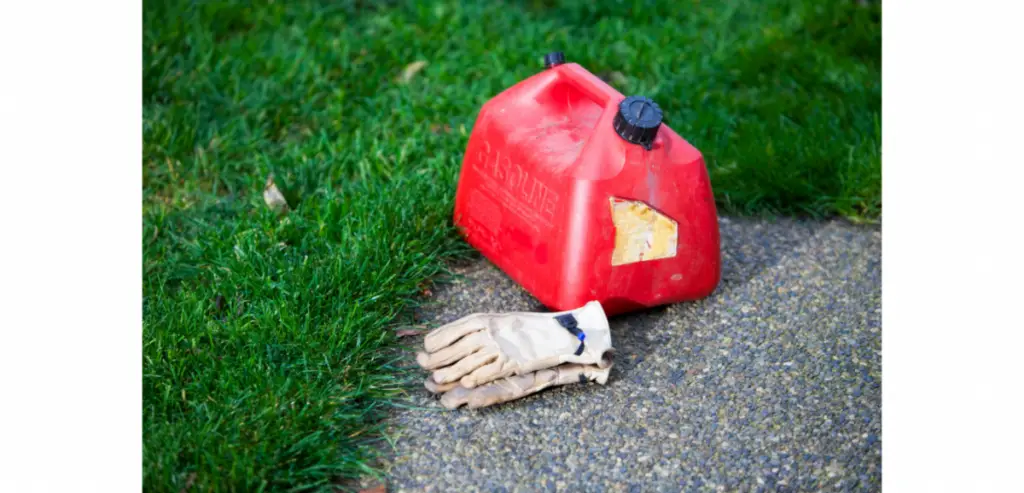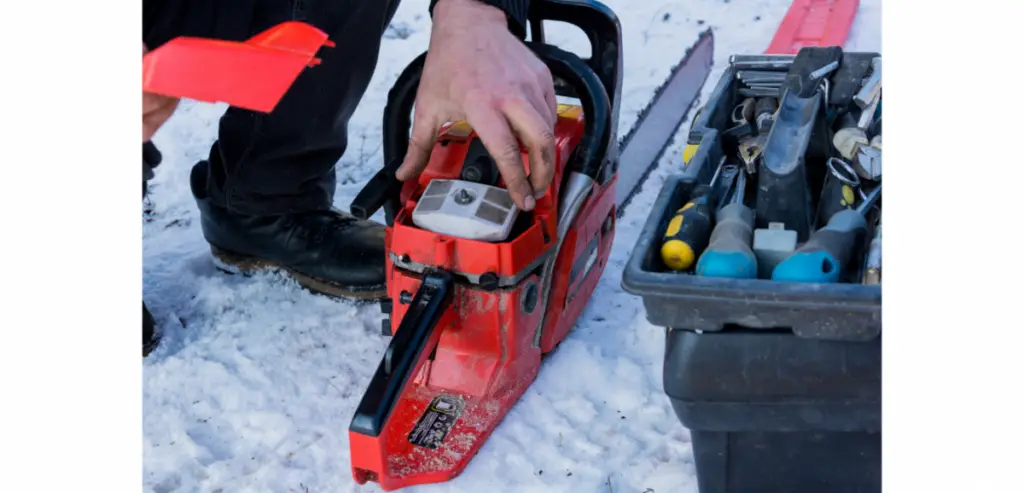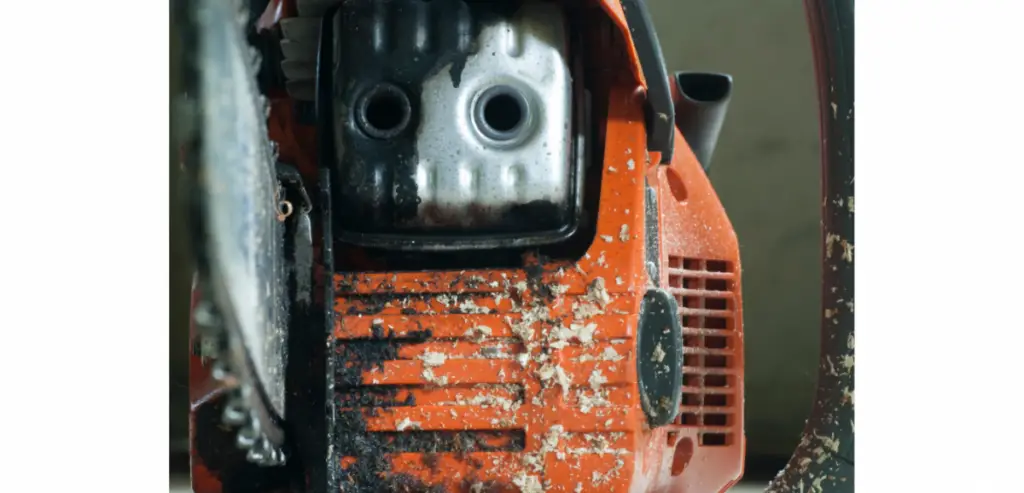Chainsaws have been around for decades and have become a staple in our lives for outdoor chores. If the chainsaw was never invented, we would likely be living in a very different and more difficult world. Chainsaws make our lives tremendously easier and more efficient. The hard days of swinging an ax to fell a tree are behind us. However, chainsaws are only helpful if they start when we need them to start. A chainsaw not starting can be extremely frustrating, but the cause can usually be attributed to a few different reasons.
When a chainsaw will not start the problem is likely due to an issue with spoiled or improperly mixed fuel, a spark plug being damaged or fouled, a dirty air filter, or a clogged muffler.

Fuel
Chainsaws use a mix of fuel and 2 cycle oil. This mixture needs to be at the correct ratio to keep your chainsaw in proper working condition. Lack of oil or excess oil in the fuel can both be damaging to the chainsaw. The oil ratio needs to be correct for your particular model of chainsaw.
Fuel is the first thing I check when a customer brings a chainsaw that will not start into my shop for repair. I take a sample of fuel from the tank to check the color and general appearance. If the color of the fuel is clear and does not appear to have an oil mixture, I know that the chainsaw has likely been run on non-mixed gasoline and is probably ruined. On the flip side, if the gasoline is too dark, the chainsaw has probably been running excess oil in the fuel mixture. If this is the case, the chainsaw will usually be fine once the fuel system is cleaned out and the muffler screen checked for built-up carbon and cleaned if necessary. Also, it is good practice to check the spark plug for being fouled and replace it if needed.
Fuel can be mixed properly and still make a saw difficult or impossible to start due to the age of the gasoline. Fuel will actually start to decay simply from being old. Never use fuel more than 1 month old. Fuel can spoil just like any other perishable item. Would you drink months-old milk? I hope not. Fuel is no different. Fuel has a shelf life and should not be used in your chainsaw if it is more than 1 month old. Some people will argue that 2 to 3-month-old fuel is fine to use, but in my 35 years of experience, it’s best not to do it. This leads to carburetor and other issues rather quickly. I always go by the 1-month rule. If gas is older than 1 month, I don’t use it, period. Only mix the amount of fuel you think you will need in the immediate future. This will eliminate fuel sitting around in a container in your garage for extended periods of time.
Another problem that can be caused by mixed gasoline (with up to 10% ethanol) specifically is called Phase Separation. Phase Separation is when fuel is sitting in a storage container that condensates from humidity. The condensation adds water to the mixed fuel. Once water is present, the ethanol in the fuel attaches itself to the water molecules causing the oil and fuel mixture to separate into district layers. The layers are composed of water, gasoline, and oil. Water is the heaviest of the three and will settle in the bottom of the fuel tank. Gasoline is the next heaviest and sits in the middle of the fuel tank. Oil is the lightest and will float at the top of the fuel tank.
The problems Phase Separation causes in chainsaws are because chainsaws pull from the bottom of the tank first. Due to Phase Separation, the chainsaw is trying to run on pure water and gasoline. Remember that the oil is floating at the top of the fuel tank and is not getting drawn into the chainsaw. This is as bad or worse than running a chainsaw on pure gasoline. It can destroy a chainsaw. Water in fuel can be avoided by not storing fuel for an extended period of time and not leaving your fuel container outside where it can be rained on.

Spark / Spark Plug
The spark plug is the second thing I check when a chainsaw is brought into my shop for repair. The spark plug is the part of the chainsaw that provides the spark in the cylinder for combustion. If the spark plug is not sparking, then there will be no combustion, and therefore the saw will not start. Remove the spark plug from the cylinder and inspect the electrode end (the park that screws into the chainsaw) for damage or being fouled (excessively dirty).
Damage to spark plugs occurs usually when the spark plug electrode has been subjected to excessive heat. The spark plug electrode will actually become discolored and or pitted. If your spark plug looks like it has been scalded from heat the only thing to do is replace it.
Fouling of a spark plug occurs when the electrode end of the spark plug gets covered in a substance called carbon (a black hard coating) or excessive oil. If this is the case with your spark plug you may be able to clean the carbon or oil with a small brush or compressed air. Make sure that the spark plug gap is visible. Carbon or oil can actually plug the gap closing it off completely. If the gap is not there the spark plug will not be able to provide a spark. Cleaning usually works but in some cases, the spark plug will need to be replaced. Just try it. If it does not work the only option is to replace the spark plug.

Air Intake / Air Filter
Chainsaws have to be able to intake air but the air needs to be clean. The function of an air filter is to filter the incoming air from dirt or debris that could damage the inside of the chainsaw’s engine. Over time an air filter will start to fill up lessening or stopping the airflow. If the chainsaw can not intake the proper amount of air the chainsaw needs the saw will not run properly or at all. The solution to this problem is an easy one. Replace the air filter with a new one or gently clean your air filter by tapping it on a hard surface. If you use compressed air to clean your air filter be cautious not to damage the filter material. I have seen people actually blow the fleece off the air filter effectively destroying it.

Exhaust / Muffler
Chainsaws need to be able to expel gases through the exhaust. If the chainsaw can not exhale it will not run correctly or at all. Most chainsaws have a screen covering the muffler’s exhaust port to stop sparks from exiting the muffler and starting fires. Over time this screen can be coated and filled in with a black hard substance called carbon. Once this screen is coated the chainsaw will not be able to expel its gases and the saw will not be able to run. If your muffler screen is clogged you will need to clean or replace the screen. Most chainsaw muffler screens are designed to be easily removed to be cleaned or replaced. Usually, the screen is held in by a small screw or metal tab. Once the screen is removed use a small brush and or some solvent like brake cleaner to clean it. Quick Note: Remember to protect yourself when using any type of solvent or cleaner by following directions on the can or bottle. In some cases, the screen will be clogged to the point of having to be replaced., If this is the case you will need to purchase a new screen for the muffler.
Wrapping Up
Chainsaws are great tools but are only good if they will start and run properly. If a chainsaw does not start when it’s needed then it may as well be a boat anchor. However, the good news is most situations can be remedied if you know what to look for as discussed in the article above. To recap, the likely culprits for a non-starting chainsaw are spoiled or improperly mixed fuel, fouled or damaged spark plug, a dirty air filter, or a clogged muffler. Check each item and take the appropriate action and you will be back in action in no time.

